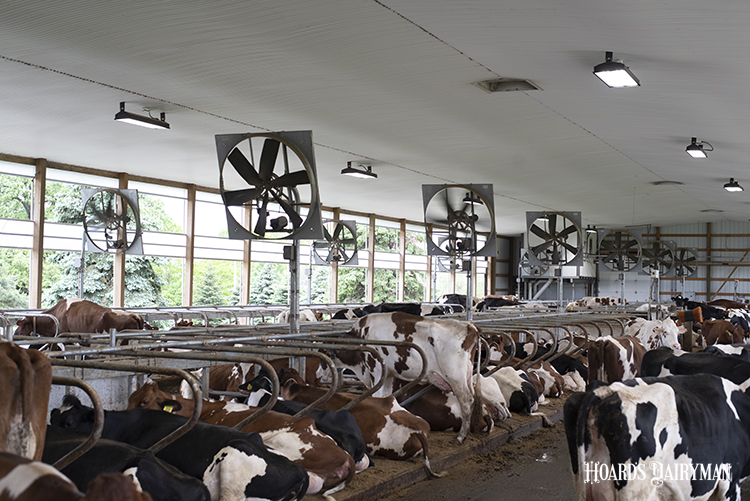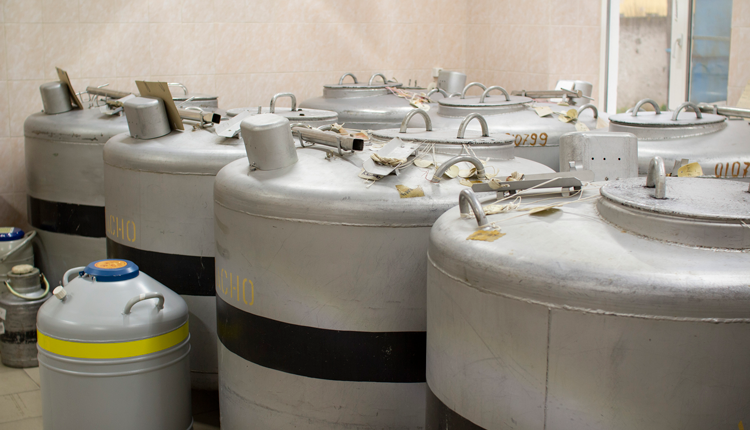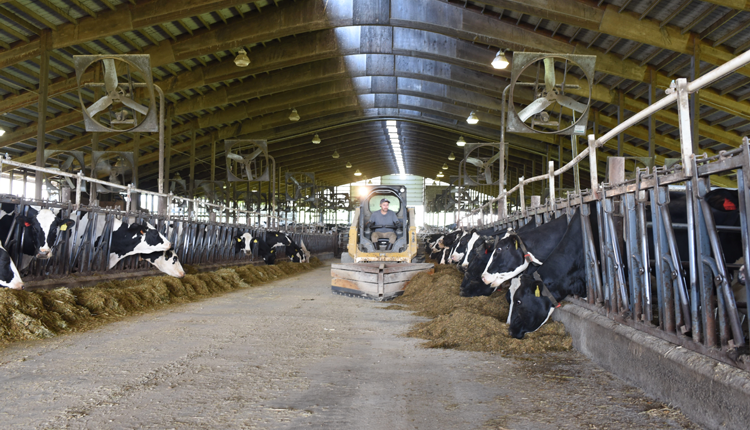
During the October Hoard’s Dairyman webinar, a listener asked if ventilation should be more of a priority in the stall beds or at the feedbunk. Veterinarian Nigel Cook’s quick answer to that was, “Beds, beds, beds.”
He went on the explain that cows are warming up while they lie down and cooling down when they stand. “You don’t need to provide extra air speed in the standing area; you just need to exhaust the air out of the barn,” he said. “Provide air speed where the cows are lying down.”
Cook, a professor at the University of Wisconsin-Madison’s School of Veterinary Medicine, shared that a resting cow is accumulating 1°F in body temperature per hour when it is lying down. On the other hand, a standing cow loses about 0.5°F per hour.
The amount of heat lost while a cow is standing is dependent on the cow’s environment, though. For example, Cook said a cow standing in the holding area may not be losing any body heat or could even be gaining heat in hot conditions.
Milk production levels also impact a cow’s heat output. “Dairy cows have changed over these last few decades,” Cook said. A cow that produces 120 pounds of milk per day generates double the heat output as a cow milking 40 pounds.
“Those older barns that used to work quite well with lower producing cows tend not to work as well with higher producing cows as those cows are generating more heat and are more sensitive to heat stress,” Cook shared.
A behavioral consequence of heat stress is more standing time. Cook noted that heat stress can cause cows to lose three hours per day of resting time. “We think that is a pretty big deal for our busy dairy cows,” Cook said.
Water soaking is one cow cooling strategy employed by dairy farms. While Cook said that water can have a lot of important cooling benefits that impact body temperature, milk production, and feed intake, they have found water soaking alone does not create an improvement in lying time. Therefore, ventilation is key, especially in the spaces that cows occupy, like the stalls.
“Whatever we do to ventilate this barn, it has to impact the cow,” Cook stated.
Cook shared is critical priorities for ventilation design:
1. Achieve target air speed in the resting microenvironment.
2. Provide sufficient air exchange to remove heat, noxious gases, and moisture from the barn.
3. Create a system that works well across all seasons.
4. Be sure it is cost effective.
To learn more, watch the October Hoard’s Dairyman webinar, “An update on cooling and ventilation for dairy cattle.” This webinar was sponsored by Tunnel Plus.






